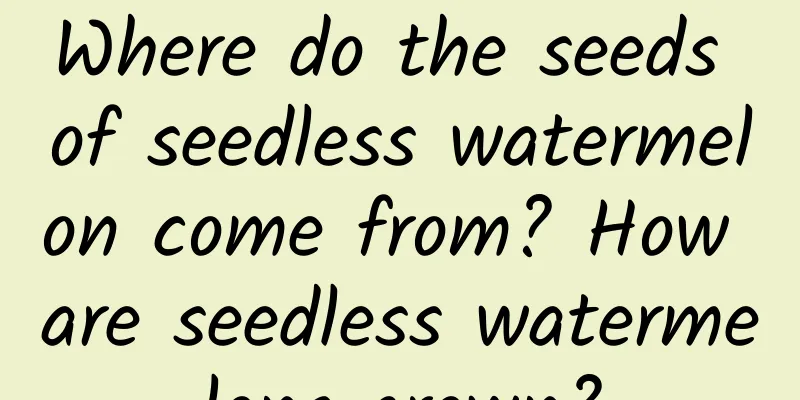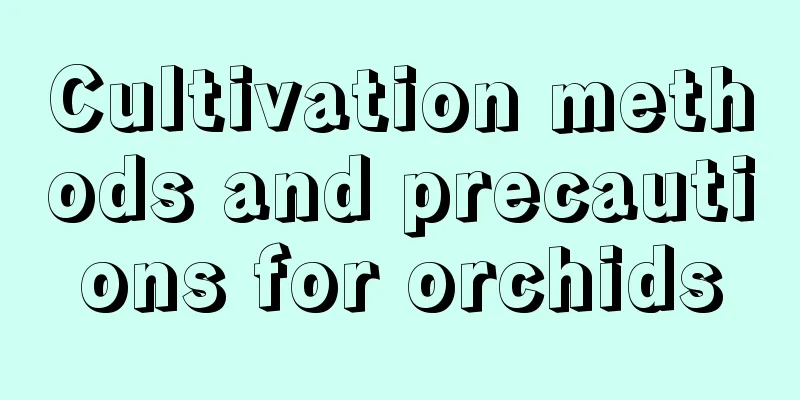Where do the seeds of seedless watermelon come from? How are seedless watermelons grown?

|
After the seedless watermelon seeds are induced to grow through mutation cultivation, colchicine is used to artificially induce tetraploid watermelons, which are then hybridized with ordinary watermelons. Seedless watermelons must be mixed with ordinary watermelons to ensure the final quality. Where do seedless watermelon seeds come from?1. Mutation breeding Seedless watermelons will not have mature black granular seeds in their final fruits, but only very rare and severely underdeveloped white immature seeds. Therefore, the fruit seed planting method commonly used for growing watermelons cannot be used, and the mutagenesis breeding method must be used to obtain seeds through hybridization. 2. Cultivation methods Ordinary diploid seeded watermelons are used as the mother plant . After cultivation, colchicine is used to induce mutation and transform it into a special tetraploid watermelon variety. Then select high-quality diploid seeded watermelon as the male parent and tetraploid watermelon as the female parent , and the hybrid obtained is triploid seedless watermelon . 3. Mixed varieties When planting seedless watermelons, you cannot plant only seedless watermelons in one piece of land. You also need to plant some seeded watermelons scattered around. This is because the chromosome pairing of the triploid seedless watermelon itself is abnormal and it cannot reproduce normally. It needs to use the pollen of the diploid ordinary watermelon to pollinate and reproduce offspring . How are seedless watermelons grown?1. Colchicine treatment of diploid watermelon seeds or seedlings Treating diploid watermelon seeds or seedlings with colchicine can hinder the formation of spindle fibers and primary walls during the metaphase of cell division, prevent the replicated chromosome sets from dividing to the two poles, and form a secondary wall in the middle. After such cultivation, the result is the formation of cells with doubled chromosome sets, which doubles the chromosome set of ordinary diploid watermelon and obtains tetraploid watermelon plants. 2. Hybridization with diploid watermelon plants Then they are hybridized with diploid watermelon plants to obtain triploid seeds. The triploid seeds develop into triploid plants, but due to the disorder of synapsis of homologous chromosomes during the methoedization process, normal reproductive cells cannot be formed. The mature diploid pollen of ordinary watermelon is then used to stimulate the ovary of the flower of the triploid plant to produce triploid fruit. Because its ovules cannot develop into seeds, it is called triploid seedless watermelon. |
>>: How do single garlic seeds come from? How to plant and cultivate single garlic seeds
Recommend
What to do if Ligustrum root rots
Causes of Ligustrum root rot One of the reasons f...
Should I cut off the pitcher plant cage when it withers? Where should I cut it off?
1. Do withered cages need to be cut off? Generall...
Where do lotus seeds come from?
Where do lotus seeds come from? Lotus seeds are l...
How to fertilize Allium orchid
How to fertilize Allium orchid Allium zephyranthe...
What fertilizer is best for chives (what fertilizer is effective when chives are not flourishing)
What fertilizer should be used for chives to grow...
The efficacy and function of Dahurian root
1. Diuretic Animal experiments have shown that Da...
Growing flowers is not that difficult. If you do these things well, even a novice can grow anything.
Soil mix suitable for most flowers Did you just d...
What crops are suitable for growing in Xinjiang? What are the main cash crops in Xinjiang?
Xinjiang is located in the inland of my country. ...
How to water the potted orchid
Watering method During the period of vigorous gro...
Common hyacinth pests and diseases control methods
Yellow rot symptom When the disease occurs, many ...
Pu'er tea growing environment conditions and characteristics
Pu'er tea growing environment conditions and ...
Cultivation methods and precautions of Prunus mume
Habits of Prunus mume Prunus mume prefers plenty ...
Sugarcane planting technology
1. Select cutting Prepare a piece of unpeeled sug...
How many times a year can okra be planted and how long is the growing period?
How many seasons can okra be planted in a year Ok...
Are succulents suitable for indoor cultivation?
1. Is it suitable? Some varieties of succulents a...









